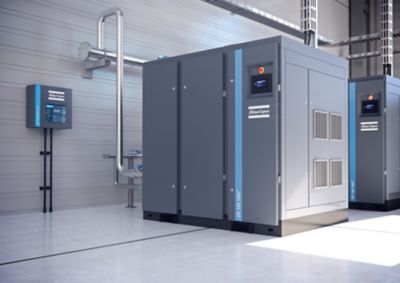Building an efficient and reliable carbon capture system
Designing a future-proof CO2 capture system
In the not-so-distant future, a CO2 capture system will be a “must-have” in many industries that produce a lot of carbon dioxide. Not only because our environment requires it, but also because governments will tax emissions so much that these systems will almost be mandatory.
There is also no doubt that companies that get on board with this technology early on give themselves a competitive advantage. But how do you make sure that your carbon dioxide capture system of today will still meet the demands of tomorrow?
Efficiency, Reliability, Modularity
Let’s look at the compression part of a CO2 capture system. Here, there are three areas that make such an installation future-proof: Efficiency, reliability and modularity.
Just as carbon capture is important for a healthy planet, so is curbing emissions in the first place. That always makes efficiency a top priority.
An operation that does not consume a lot of energy not only benefits the environment but also your bottom line. Energy costs are responsible for the vast majority (up to 80%) of the total cost of ownership of a CO2 compressor. Therefore, choosing an efficient model will quickly pay for itself.
One of the keys to picking the right type of compressor is to know what will happen to the carbon dioxide after it is compressed. Liquefaction, for example, requires a different outlet pressure than carbon sequestration. Another important factor is the flow of carbon dioxide-rich gas. Below we will discuss different types of compression systems that can contribute to installation efficiency.
Types of compressors in a CO2 capture system
Generally, if high pressure is needed and the flow is not overly high, then a reciprocating piston compressor is the right choice. If the flow is high but the pressure is not, then a screw compressor is usually the better choice.
An often-overlooked reason for inefficient systems is leaks. In the case of compressed air, they “just” waste a lot of energy. However, when it comes to carbon dioxide capture systems, there is also a negative impact on the environment. Finally, CO2 that escapes through leaks cannot be sold. Therefore, this means a loss of revenue for companies that sell their compressed gas.
Here is a useful tip: When choosing your CO2 compressor, it’s always a good idea to look into investing in a model with variable speed drive (VSD). These are the most efficient compressors on the market because their output matches the respective demand. That makes them an optimal choice for operations with changing flows.
The importance of reliable carbon capture systems
Capturing the CO2 from your emissions is a full-time job. If your facility operates around the clock, then so does your carbon dioxide capture system. And the cost of a failure is high – both in terms of the impact on the environment and your operating costs.
That makes reliability a key issue. Because if your system goes down, there is no place for the carbon dioxide to go other than into the air.
Reliability is also important because the compression of carbon dioxide is more demanding than the compression of air. There are more contaminants, and the CO2 can form carbonic acid when combined with water, which causes corrosion.
Therefore, it is never a good idea to get a CO2 compressor that is essentially just a modified compressed air unit. One thing you should always look out for is that the manufacturer only uses stainless steel or other corrosion-resistant materials.
Note: The right compressor will not only last longer but also reduce your maintenance costs.
A modular carbon capture system – a good strategic decision
Because reliability is so important, it makes sense to spread the workload around among different compressors. That way, if one goes down, you are not forced to release the CO2 into the environment.
It is often a good idea to invest in a smaller standby model. That not only makes the entire system more scalable but also easier to maintain.
Another advantage of a modular approach is that you can choose which technology you want to use for which part of the carbon capture process. That might mean that you use a screw compressor when there is low pressure and a high flow. Conversely, you use a reciprocating piston compressor for a small flow and high pressure. This increases the reliability of the overall system and offers you greater flexibility.
However, when you match different technologies, you should try to get all units from the same supplier. As a result, you won’t face compatibility problems.
And when you choose Atlas Copco as that supplier, you can also take advantage of our central controllers. They can help you take your efficiency and reliability to the next level. And, of course, you will also benefit from Atlas Copco’s SMARTLINK technology with all of its monitoring and control options.
Only trust the experts with your CO2 capture system
If you want to design a future-proof carbon dioxide capture system, then it’s best to turn to the experts. Because if you value efficiency, reliability and modularity, then only equipment made specifically for CO2 compression will get the job done right. If you are interested in finding out how we ensure that today’s CO2 capture system still meets the demands of tomorrow, contact one of our experts now.

